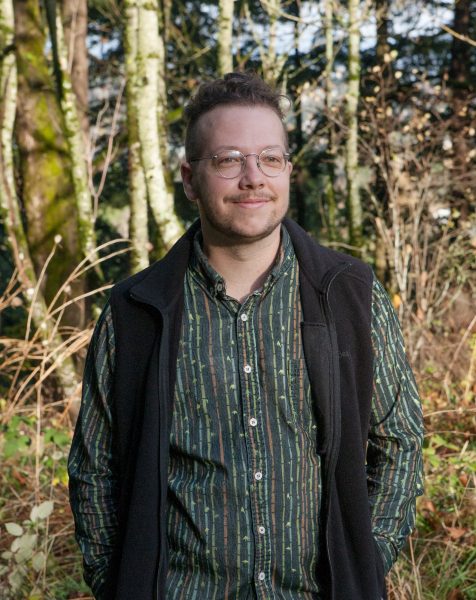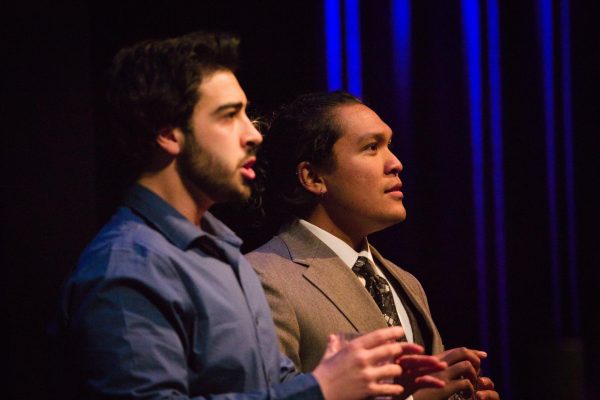Museum opens with series of experimental exhibits
After being closed for the summer, the Museum of Culture and Environment is reopening its doors in Dean Hall with a set of interdisciplinary, cross-campus exhibits in conjunction with the Sarah Spurgeon Gallery in Randall Hall .
Of the four shows opening , one, a photography exhibition called “Notes from Suburbia,” will be featured in Spurgeon.. Two more will be presented in the museum.. The fourth,a scaled replica of the solar system, will have its home base in Dean, with the rest spread throughout campus.
“It will be a nice way to sort of emphasize collaboration across the whole campus — between science and art, which we think is important, but also celebrating this other theme of social justice, which is a big theme in Notes from Suburbia,” said museum Director Mark Auslander, associate professor of anthropology and museum studies. Social justice — specifically mass incarceration — is also the theme of a companion photo exhibit at the museum, kicking off a “year of dialogue” and special events on the topic.
Suburbia in Sarah Spurgeon Gallery
“Notes from Suburbia,” opening in Spurgeon, will be prefaced with an artist talk in Randall room 117 at 4 p.m., right before the opening reception at 5 p.m. This exhibition will feature East Coast photographer Michael J. Hoffman and local photographer Chris Heard, who will also be featured in the museum’s gallery with his exhibit “The Penitent.”
The exhibition by Hoffman and Heard is a collaboration of contrasting views of suburbia, which was inspired by research done by Central’s Ellen Avitts, associate professor of art history.
“Where Michael’s thing is really kind of focused on this specific thing of people using and repurposing this room in their homes for their needs,” Heard said, “mine is more of … a personal trip through my own suburbia, you might say, and my notions about suburbia, and just general impressions.”
Besides the difference in concepts of suburbia portrayed by the two artists, they also processed and present their images differently. While Heard shot black-and-white images with film and matted the images on white, Hoffman shot color photos with a digital camera and matted them on black, making the contrast even greater.
Suburbia to solitary confinement
To connect Dean and Randall with more than the presence of Pluto in art department Chair Greg Schlanger’s office, there will be a table at the “Notes from Suburbia” reception where students can make replica comets. Then, after the reception, these comets will be carried in a procession from Randall to the museum, where their opening will take place at 6 p.m.
Heard’s exhibit in the museum is called “The Penitent” and showcases the artist’s preference and skill in black and white photography. He printed his photos on very thin paper, then mounted them onto mattes of melted wax. The images portray cells of an old, long-closed, Philadelphia prison, Eastern State Penitentiary. The depictions of the minimalist, solitary state of the windowless cells calls attention to the injustice perpetuated in the American prison system. This exhibit will be the first in a year-long series of events across campus designed to prompt dialogue on the topic of mass incarceration.
A River Reborn
The main gallery’s exhibit that opens todayis The Elwha: A River Reborn, a traveling exhibit from the Burke Museum. This exhibit focuses on a river in the Olympic Peninsula that had long been dammed to generate energy but is now in the process of being restored after the dam was removed. The damming of the river not only impacted the fish and the ecosystem, but the local tribes’ spiritual view of the river. These issues are explored via informational banners and videos.
“For me personally I can definitely see the connection between the prison work and the Elwha because they both have to do with the right of a generally disadvantaged population,” Heard said. “I think there’s a total humanistic connection in both of those.”
Perhaps Pluto could also be considered part of a “disadvantaged population.”
Ecosystem to solar system
“Touring the Solar System,” the museum’s planetary model, will be part of a year-long, educational program affiliated with GEARUP.
Liz Seelye, a senior history and anthropology major and intern for Auslander, has taken on much of the responsibility for this “out of this world” project. Though she hasn’t had reason to study much astronomy until taking on this collaboration with Auslander and physics Professor Bruce Palmquist, she sees it as a learning experience.
“One thing that’s great about working in the museum like this, you get handed a project and you maybe know a little bit about it or that? this is something you’re just completely newly exposed to, so you have to jump in and become an expert on this subject,” Seelye said. “It’s not stagnant, we’re always moving forward, having to learn new things and also relearn stuff that we might have been misinformed on.”
Each different planet (including the dwarf planet Pluto) will be placed within scaled-down distances from each other across campus. The sun will make its home in Dean, putting Uranus, in the Language and Literature building, Pluto in the art department in Randall Hall, all based on the relative distances.
Photos in focus
“Paul Klee “used to say: Art doesn’t show what is visible, art makes visible,” Auslander said. “A great photographer doesn’t just represent reality, but lets us see something we didn’t see before.”
There appear to be several rather subtle connections between the exhibit’s opening on Thursday, further connecting the departments here at Central and the people. With the sun soon taking its place in Dean, the museum will once again become the center of these interdisciplinary collaborations. The hope is to engage and educate visitors on the interconnectedness of our campus and the major issues in the surrounding world.




